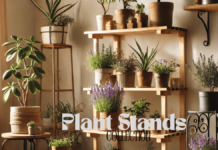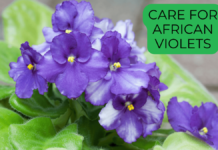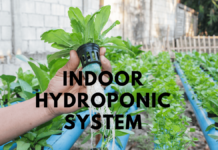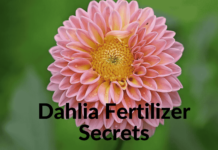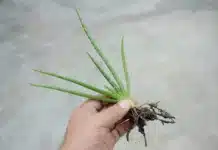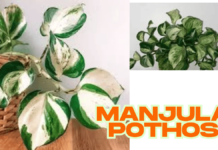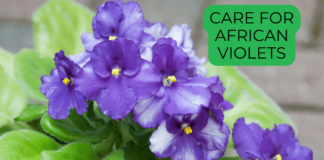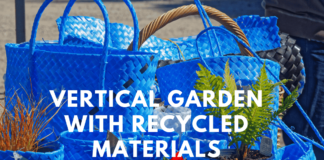Monstera deliciosa, commonly known as the Swiss cheese plant or split-leaf philodendron, is a popular and striking houseplant. With its large, glossy, heart-shaped leaves and unique fenestrations (the holes and splits in the leaves), it’s no wonder that this tropical beauty is a favorite among plant enthusiasts. Not only is the Monstera a visually appealing addition to any space, but it is also relatively easy to care for, making it an ideal choice for beginners and experienced gardeners alike.
In this article, we’ll dive deep to how to care for a monstera plant , types of monstera plants, propagation methods, and troubleshooting tips to keep your Monstera thriving. Whether you’re a novice or a seasoned plant parent, this guide will help you nurture your Monstera into a lush and healthy beauty.
Understanding How to Care for a Monstera Plant
Monstera plants thrive in humid, tropical environments, and they need specific conditions to grow to their full potential. They are native to Central America and prefer warm temperatures, indirect light, and well-draining soil. Here’s a breakdown of the essential care factors for a healthy Monstera deliciosa:
Sunlight Requirements
The Monstera deliciosa does best in bright, indirect sunlight. Direct sunlight can scorch its delicate leaves, so it’s important to find a spot with filtered light. If you’re growing your Monstera indoors, place it near a window with sheer curtains or use artificial grow lights if natural light is insufficient.
In outdoor spaces, the Swiss cheese plant can grow under the canopy of larger trees, making it perfect for shaded or partially shaded areas. However, too little light can lead to leggy growth and fewer fenestrations (holes in the leaves).
Soil and Potting Needs
Monstera plants require well-draining soil to prevent root rot. A mix of peat-based soil with added perlite or shredded bark is ideal. This combination promotes aeration and drainage while providing the necessary nutrients. When choosing a pot for your Monstera, ensure it has ample drainage holes to allow excess water to escape.
As your Monstera grows, it will eventually outgrow its pot. When this happens, repot your plant every couple of years into a larger container, increasing the pot size by a few inches to accommodate its expanding root system.
Watering Your Monstera
One of the most common mistakes people make when caring for Monstera plants is overwatering. These plants prefer to dry out between waterings, so it’s important to check the soil moisture regularly. Stick your finger into the soil; if the top 2-3 inches are dry, it’s time to water.
During the growing season (spring and summer), Monstera may need watering once a week, but in the winter, when the plant is dormant, watering every couple of weeks should suffice. Always water deeply, ensuring that water runs out from the drainage hole at the bottom of the pot.
Temperature and Humidity
Monstera plants flourish in warm environments, typically between 65°F and 85°F. They are sensitive to cold temperatures and should be kept away from drafts and air conditioners. In terms of humidity, these plants prefer a humid environment, ideally around 60%. To boost humidity, you can mist the leaves or use a humidifier, particularly in dry indoor conditions.
Propagating Monstera: Easy Methods for Growing New Plants
Monstera deliciosa is relatively easy to propagate, whether by stem cuttings or air layering. Here’s a detailed guide on how to propagate your Monstera successfully:
Stem Cutting Method
Stem cuttings are the most common way to propagate Monstera. Follow these simple steps:
- Using clean, sharp scissors or pruning shears, cut a stem with a node (the bump where roots will grow) and at least one leaf.
- Place the cutting in a glass of water, ensuring the node is submerged. Change the water every 3-5 days.
- After a few weeks, you’ll see roots developing. Once the roots are a few inches long, transplant the cutting into fresh soil.
Air Layering Method
For a more advanced and risk-free propagation method, you can use air layering. Here’s how:
- Choose a healthy stem with a node.
- Cut a small notch in the stem below the node.
- Wrap sphagnum moss around the notch and moisten it. Cover it with plastic to keep the moss humid.
- After a few months, when roots have developed, cut the stem below the roots and plant the new Monstera in soil.
Both methods are effective, but air layering tends to have a higher success rate, as it allows the roots to form while still attached to the parent plant.
How to Get Monstera Leaves to Split
Monstera leaves are famous for their unique splits, or fenestrations, which develop as the plant matures. To encourage the leaves to split, it’s important to provide optimal conditions for growth:
- Light: Ensure the plant receives plenty of bright, indirect light. A grow light can also help promote the formation of fenestrations.
- Watering: Maintain consistent watering, letting the soil dry out slightly between waterings.
- Fertilizing: Feed your Monstera with a balanced fertilizer every few months during the growing season. This helps provide essential nutrients for healthy leaf development.
If your Monstera is growing slowly or not developing splits, it may not be receiving enough light or nutrients. Increasing light intensity or adding fertilizer can help stimulate new growth.
Types of Monstera Plants: A Quick Overview
Monstera deliciosa is just one of many species in the Monstera genus. Here are a few notable types of Monstera plants:
- Monstera albo: This rare, variegated form of Monstera deliciosa has beautiful white splashes on its green leaves. It is often more expensive due to its scarcity and slower growth rate.
- Monstera obliqua: Known for its delicate, airy leaves with large holes, Monstera obliqua is one of the rarest and most expensive varieties.
- Monstera adansonii: Commonly called the Swiss cheese plant, it has larger leaves than the standard Monstera with more pronounced holes.
- Monstera dubia: This vining species has small, round leaves with silvery markings and is commonly grown as a groundcover or climbing plant.
Troubleshooting Common Monstera Problems
Despite being relatively low-maintenance, Monstera plants can face a few issues. Here are some common problems and how to address them:
Brown Leaf Tips: This often indicates dry soil or inconsistent watering. Regularly water your Monstera, making sure the soil doesn’t dry out completely.
Yellow Leaves: If your Monstera’s leaves are turning yellow, it might be a sign of overwatering or insufficient light. Ensure proper drainage and provide adequate light.
Wilting or Curling Leaves: This can occur due to overwatering or low humidity. Check the soil for moisture levels and consider using a humidifier if the air is too dry.
FAQs about Monstera Care
Q: How often should I water my Monstera?
A: Water your Monstera once the top 2-3 inches of soil dry out. During the growing season, it may need watering once a week, but in winter, it may only require water every few weeks.
Q: Can I grow Monstera outside?
A: Yes, Monstera can be grown outside in USDA zones 10-12, where temperatures remain warm. It thrives in shaded or partially shaded areas.
Q: How can I encourage Monstera leaves to split?
A: To encourage leaf splits, provide bright, indirect light, and maintain consistent watering and fertilizing.
Conclusion
Caring for a Monstera deliciosa is straightforward once you understand its basic needs. With the right environment, watering routine, and occasional maintenance, your Monstera will reward you with beautiful, large, split leaves that add a tropical touch to your space. Whether you’re a beginner or an experienced plant enthusiast, this low-maintenance beauty is a perfect addition to any home.
With the proper care, your Monstera can thrive for years, growing larger and more stunning as time goes on. So, take the time to nurture it, and you’ll enjoy its lush foliage and exotic charm in your home or garden.
Pros and Cons of Monstera Care
| Pros | Cons |
|---|---|
| Easy to care for once established | Toxic to pets and humans |
| Can grow large, making a bold statement | Requires proper lighting and humidity |
| Attractive, unique leaves (fenestrations) | Can suffer from root rot if overwatered |
| Can be propagated easily | May outgrow its pot over time |


